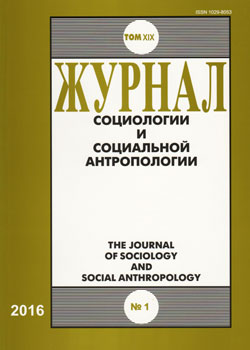Современное искусство как профессия: карьерные пути молодых художников с разным образовательным бэкграундом (случай Санкт-Петербурга)
Ключевые слова:
Аннотация
According toresearch conducted in the UK, Europe and USA creative labor implies uncertainty and risk. However, the distribution of risk is associated with structural and institutional factors: age, gender, ethnicity, social class, a particular field of activity and so on. The main research question of this paper is how educational background influence on creative graduates career paths. In particular, the paper is based on empirical study of young artists of St. Petersburg, graduates of two different types of educational institutions, conceptualized as “classical / modern” and “contemporary”. The empirical research included 15 in-depth interviews and 10 séances of participant observation. Belonging to different paradigms of visual art, two types of educational institutions develop in the young artists various competences and skills, preparing them for the realities of the relevant professional life. In particular, the basis for education in the “classical / modern” institution becomes the improvement of artistic technique by preset exercises. The “contemporary” educational institutions focus on the acquisition of competencies of immaterial artistic production: the skills of writing texts about the artworks, discussions of their conceptions and its relevance, history and theory of contemporary art. Research results indicate that the educational background largely determines the starting point of the professional artists’careers and their methods of adapting to the art market.
Опубликован
2016-02-20
Как цитировать
Кулева, М. (2016). Современное искусство как профессия: карьерные пути молодых художников с разным образовательным бэкграундом (случай Санкт-Петербурга) . ЖУРНАЛ СОЦИОЛОГИИ И СОЦИАЛЬНОЙ АНТРОПОЛОГИИ, 19(1), 110–124. извлечено от http://jourssa.ru/jourssa/article/view/460
Раздел
Социология искусства

